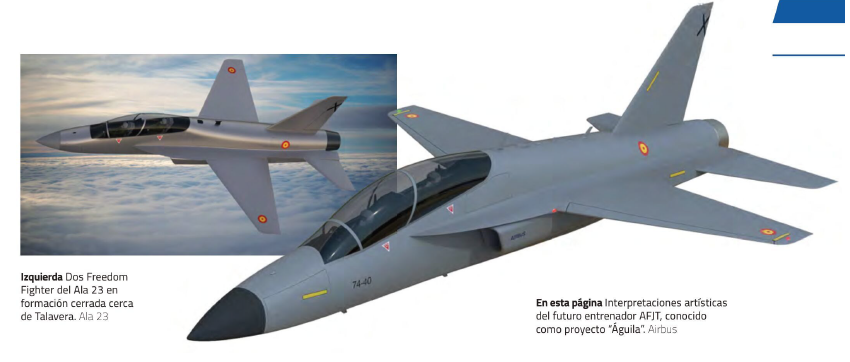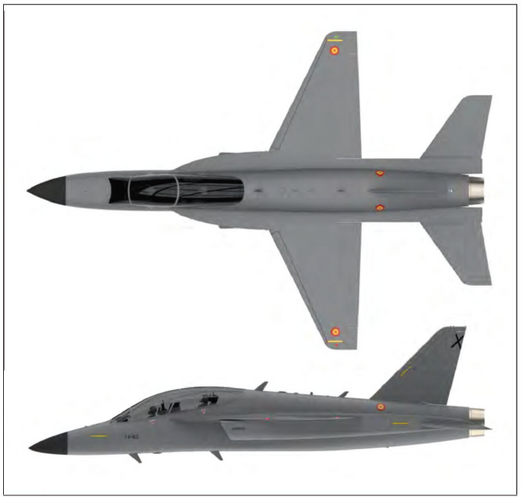Hood,
My notes say that Airbus’ most recent market estimate is for 800 advanced trainer/LIFT aircraft (excluding aggressors, etc.), which chimes with what Aeralis and Boeing have said.
Spain want 50-55 AFJTs, and France would probably want a similar number. You might even see Germany abandon its long term training presence in the USA, while Finland has also been cited as a near-term prospect. It’s starting to look like a decent number.
I don’t recall suggesting that M-346 is ‘inferior’ to T-50 – I said that both were ‘flawed’ and that both were DESIGNED in the mid-1990s, using aerodynamic, design and production engineering practises from that time.
I would take issue with your flat statement that Hawk is unlikely to achieve more sales. More for Qatar is a VERY distinct possibility, for example.
I would also suggest that the shift in emphasis from turboprop basic trainers to advanced jet trainers has already started – and that not everyone will want LIFT (Phase 4), some will just want Advanced (Phase 3). Supersonic performance is useful for one of those, less so for the other.
Supersonic performance, per se, is unnecessary for advanced training. Whenever the US wants to cut cost or streamline training, the single supersonic T-38 hop in the syllabus is always the one to be dropped.
However, supersonic speed is relevant to the light fighter derivatives of advanced trainers, and the kind of sustained turn performance required in both frontline and advanced training roles does require the kind of thrust/weight ratios that might be associated with supersonic performance, and might require afterburner.
I’m not sure that I’d class T-7A as anything other than a home-grown US product, despite Saab’s significant input on the design/production engineering side.
There aren’t many examples of fighter deals being accompanied by trainer sales, but there are some, and BAE have certainly found the ability to offer Typhoon/Hawk useful, and customers have liked it. As well as Saudi Arabia, Oman, and Qatar, we saw the Bahraini and Emirati Typhoon bids incorporating Hawk options, and that was seen as being a useful discriminator.
TomcatViP
It might look more modern, but it really isn’t. No open architecture avionics, no advanced cockpit, no model-based design, nothing like the same ‘training system’ concept, nothing like the same degree of embedded emulation/simulation, etc.
Ceccherini
As above. I don’t dismiss Leonardo’s capabilities (nor KAI’s) but the game has moved on since the M-345 and T-50 were designed (in the late ‘90s). Large area displays, wide area HUDs, helmet sights, embedded simulation and emulation, etc. And the design process has moved on too. Look at the differences between Gripen and Gripen E design and manufacturing, for example.
Archibald
I’m not sure that Dassault would have “certainly rushed toward an Alphajet replacement had the market been lucrative” – I’m not sure they have the capacity to do more than Falcon/Rafale/Neuron nowadays. Bear in mind that the AlphaJet itself was a collaboration.
Nor do I agree that what is needed is a basic, subsonic, non stealth jet trainer to replace the Hawk and Alphajet – non-stealth, certainly, subsonic, perhaps, but you do need agility and representative avionics, and very sophisticated onboard emulation/simulation.
Finally, I’d disagree that there has been only “very vague informations available on this new project.” Dig a little, dig out your Spanish translation app, look back at presentations from conferences, etc. and there seems to be more than you might think.
Archibald.
There are a number of markets for which lighter, cheaper jet trainers are viable - sometimes for Advanced (Phase 3) training, and sometimes as an alternative to turboprops for Basic (Phase 2) training. Interestingly, what was then called the M-311 was liked a great deal when the RAF initially looked at new basic trainers, and Aeralis propose a jet basic trainer as part of their modular concept.
Helix 88
The L-39NG looks interesting – perhaps especially as an alternative to Chinese jet trainers.
SSgtC
I’d respectfully disagree. I don’t believe that supersonic performance is necessary in an advanced trainer or LIFT. Nor do I think that performance greater than a PC-21 is unnecessary without getting advanced “avionic simulation capabilities”, the latter is vital, I believe, but so is enough performance to make the world go by ‘quickly’ – even the PC-21 (far and away the fastest of the turboprops) doesn’t adequately prepare pilots for a fast jet cockpit. Can it perform some of the Advanced syllabus? Sure. But all of it, up to OCU? Not adequately is what my QFI pals tell me.

 en.wikipedia.org
en.wikipedia.org

 en.wikipedia.org
en.wikipedia.org







